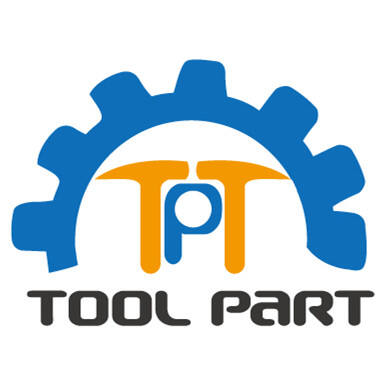Suprasti paviršiaus paruošimo įrankių pagrindus
Paviršiaus paruošimo ir apdailos srityje atlošo plokštės veikia kaip kritiškai svarbus tarpas tarp elektro įrankių ir abrazyvinių diskų. Šios svarbios sudėtinės dalys atlieka svarbų vaidmenį užtikrinant optimalų našumą, ilgaam pagalbos plokštės tiesiogiai daro įtaką jų funkcionalumui, ilgaamžiškumui ir gebėjimui pateikti profesionalaus lygio baigiamuosius rezultatus.
Atgalinio padėklo medžiagų vystymąsi skatino gamybos technologijų pažanga ir didėjantis poreikis specializuotoms paviršių paruošimo sistemoms. Nuo tradicinių variantų iki šiuolaikinių kompozitų, atgalinių padėklų medžiagų asortimentas nuolat plečiasi, suteikiant specialistams daugiau pasirinkimų nei anksčiau.
Pagrindinės atgalinių padėklų medžiagų kategorijos
Guminių pagrindų atgaliniai padėklai
Natūralūs ir sintetiniai gumos mišiniai sudaro daugelio atgalinių padėklų medžiagų pagrindą. Šios medžiagos siūlo puikią lankstumo savybes ir smūgių sugeriančias savybes, todėl jos yra idealios naudoti ten, kur reikia tikslaus valdymo ir sklandaus veikimo. Aukštos kokybės gumos pagrindo atgaliniai padėklai užtikrina puikų sukibimą, kartu išlaikant būtiną amortizacijos efektą, kuris apsaugo jautrius paviršius nuo pažeidimų.
Pažengusios guminės formulės apima specialius priedus, kurie padidina atsparumą šilumai ir neleidžia medžiagai degraduoti veikiant cheminėms medžiagoms ir aliejams. Dėl šios priežasties guminių pagrindų plokštelės ypač tinka automobilių detalizavimui ir pramonės apdailos taikymui, kai aplinkos sąlygos gali būti nepalankios.
Peno pagrindu pagaminti sprendimai
Penos medžiagos atspindi svarbų žingsnį pirmyn padant technologijų srityje. Šios lengvos, tačiau patvarios medžiagos yra skirtingų tankių ir sudėčių, kiekviena sukuriama tam tikrai paskirčiai. Atvirojoje penoje struktūra užtikrina puikią ventiliaciją ir šilumos išsisklaidymą, tuo tarpu uždarosios ląstelės variantai siūlo padidintą ilgaamžiškumą ir atsparumą vandeniui.
Šiuolaikinės penos pagrindo plokštelės dažnai apima kelias sluoksnių su skirtingais tankiais, kurios sukuria optimalų balansą tarp atramos ir lankstumo. Tokia konstrukcija leidžia geriau paskirstyti slėgį ir geriau pritaikyti prie išlenktų paviršių, todėl apdailos rezultatai yra nuoseclesni.

Pažengę kompozitiniai medžiagos
Polimerų Paskatintos Sudėtys
Naujausios kartos pagrindo medžiagų konstrukcijos pasižymi sudėtingomis polimerų mišiniais, kurie sujungia geriausias savybes iš įvairių medžiagų. Šie kompozitai siūlo padidintą ilgaamžiškumą, pagerintą atsparumą karščiui ir puikias apkrovos paskirstymo savybes. Gamintojai sukūrė patikslintas formules, kurios optimizuoja pusiausvyrą tarp lankstumo ir stabilumo, užtikrindami nuolatą veikimą sunkiomis sąlygoms.
Pažengę polimerai taip pat leidžia integruoti aušinimo kanalus ir inovatyvias paviršiaus struktūras, kurios pagerina oro cirkuliaciją ir neleidžia kauptis karščiui naudojant ilgą laiką. Ši technologija revoliucionizavo didelio greičio pritaikymus, kur tradicinės medžiagos gali susidurti su šilumos valdymo problemomis.
Hibridinės Medžiagų Sistemos
Hibridinės atraminės plokštelės yra pažengusios medžiagų mokslo srities paviršių paruošimo įrankių kryptis. Šios sistemos sujungia skirtingų medžiagų sluoksnis, kurių kiekvienas atlieka konkrečią funkciją bendroje plokštelės veikloje. Pavyzdžiui, standusis vidinis sluoksnis gali suteikti stabilumą, o išoriniai sluoksniai – lankstumą ir amortizaciją.
Medžiagų strategiškas derinimas leidžia optimizuoti pagrindines našumo savybes, tokias kaip ilgaamžiškumas, karščiui atsparumas ir virpesių mažinimas. Šis metodas yra ypač veiksmingas profesionaliose sąlygose, kai atraminės plokštelės turi išlaikyti intensyvų naudojimą ir kartu užtikrinti tikslų kontrolę.
Aplinkos aspektai ir atsinaujinančios galimybės
Ekologiškos medžiagos
Augant ekologiniam sąmoningumui, gamintojai kuria atraminių plokštelių medžiagas, kurios sumažina poveikį aplinkai, neprarandant jų našumo savybių. Vis dažniau atraminių plokštelių gamyboje naudojami biologinės kilmės polimerai ir perdirbti komponentai, kurie siūlo atsinaujinančias alternatyvas tradicinėms medžiagoms.
Šios ekologiškos galimybės dažnai rodo lygiavertę ar geresnę našumo charakteristiką, tuo pačiu mažinant anglies pėdsaką paviršių paruošimo operacijose. Biodegraduojamų ir perdirbiamų atraminės plokštelės medžiagų plėtra yra svarbus žingsnis link darnesnių pramonės praktikų.
Ilgalaikio atsparumo akcentavimas
Atraminės plokštelės medžiagos pasirinkimas vis labiau pabrėžia ilgaamžiškumą ir nubrozdinimų atsparumą. Kuriant ilgesnės tarnavimo trukmės produktus, gamintojai padeda mažinti atliekas ir išteklių suvartojimą. Pažengusios medžiagos, kurios pailgina atraminės plokštelės tarnavimo laiką, ne tik suteikia ekonominius privalumus, bet ir prisideda prie aplinkosaugos darnos.
Šiuolaikinės atraminės plokštelės medžiagos integruoja nubrozdinimų indikatorius ir protingas konstrukcijos savybes, kurios padeda vartotojams stebėti produkto būklę ir optimaliai planuoti pakeitimą. Toks požiūris užtikrina maksimalų naudingumą, tuo pačiu mažinant nepagrįstą šiukšliavimą.
Medžiagos pasirinkimas pagal konkrečią paskirtį
Pramoninės programos
Kietos pramonės aplinkos reikalauja atraminio padų medžiagų, kurios atlaiko ekstremalias sąlygas. Dažniausiai šioms sritims parenkamos aukštoje temperatūroje atsparios polimerinės medžiagos ir sustiprintos kompozitinės medžiagos. Šios medžiagos išlaiko savo konstrukcinį stabilumą ir naudingąsias savybes net intensyvios naudojimo sąlygose.
Atraminio padų medžiagų pasirinkimas pramonės sritims dažniausiai apima kruopštaus cheminės atsparumo, apkrovą laikančios galios ir terminio stabilumo vertinimo procesą. Gaminant toliau plėtojamos specializuotos formulės, kurios atitiktų šiuos reikalavimus, užtikrindamos operatoriaus saugą ir našumą.
Tiksliosios Apdailos Reikalavimai
Aukštos kokybės apdailos darbams reikia atraminės padų medžiagų, kurios užtikrina puikų valdymą ir nuoseklumą. Ultragladkios paviršiaus savybės ir tikslūs medžiagos sudėties komponentai užtikrina optimalų slėgio ir judėjimo perdavimą. Šios specializuotos medžiagos dažnai apima mikrostruktūravimą ir pažengusias paviršiaus apdailos technologijas, skirtas našumui pagerinti.
Atraminės padų medžiagų, skirtų tiksliesiems darbams, plėtojimas sukėlė inovacijas medžiagų apdorojimo ir kokybės kontrolės srityse. Šie pasiekimai leidžia specialistams pasiekti aukščiausią apdailos kokybę įvairių tipų darbuose.
Dažniausiai užduodami klausimai
Kas nulemia atraminės pados medžiagos tarnavimo laiką?
Atraminės padų medžiagos tarnavimo laiką veikia keli veiksniai, įskaitant naudojimo intensyvumą, aplinkos sąlygas ir priežiūros praktikas. Reguliarios valymo procedūros, tinkamas saugojimas ir rekomenduotų greičio bei slėgio parametrų laikymasis gali reikšmingai pailginti atraminių padų eksploatacijos laiką.
Kaip pasirinkti tinkamą atbulinio pad padavimo medžiagą mano programai?
Pasirinkimas turėtų būti pagrįstas tokiais veiksniais kaip apdirbama paviršius, naudojamo abrazyvo tipas, greičio reikalavimai ir aplinkos sąlygos. Apsvarstykite galimybę pasikonsultuoti su gamintojais ar specialistais, kurie gali rekomenduoti konkrečias medžiagas pagal jūsų unikalius reikalavimus.
Ar verta investuoti į aukštos kokybės atbulinio pad padavimo medžiagas?
Aukštos kokybės atbulinio pad padavimo medžiagos paprastai siūlo geresnę ilgaamžiškumą, vientisumą ir našumą, dažnai mažinant ilgalaikius kaštus dėl rečio pakeitimų ir pagerėjusio darbo kokybės. Pradinė investicija į premium medžiagas paprastai atsiperka dėl ilgesnio tarnavimo laiko ir puikesnių rezultatų.
Kaip temperatūra veikia skirtingas atbulinio pad padavimo medžiagas?
Temperatūra skirtingai veikia įvairius pagrindo plokštelės medžiagas, kai kurios iš jų parodo didesnį atsparumą šilumos sąlygoms nei kitos. Pažengusios medžiagos dažnai apima specifinius junginius arba konstrukcijos metodus, kurie padeda valdyti šilumos kaupimąsi ir išlaikyti našumą esant aukštai temperatūrai.

